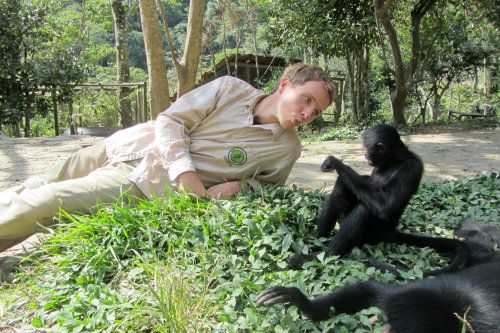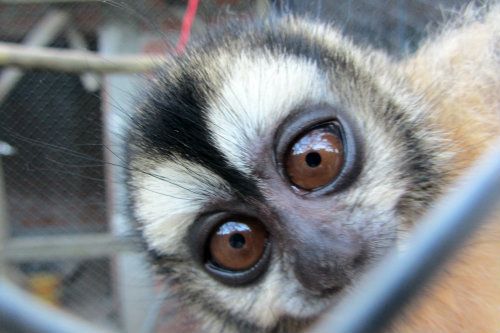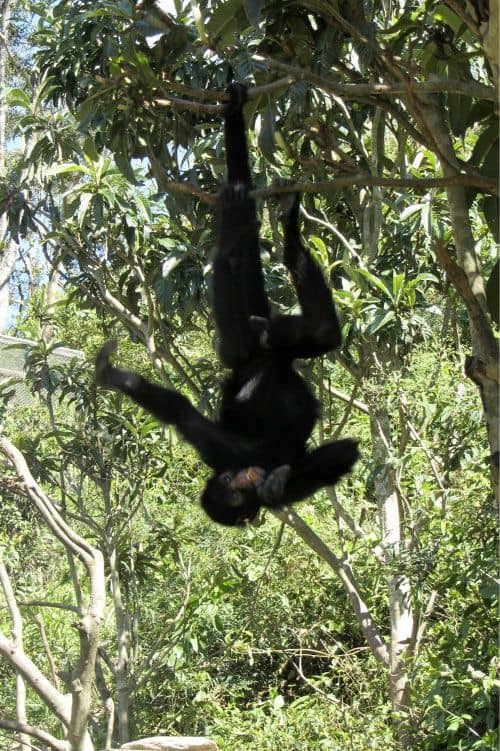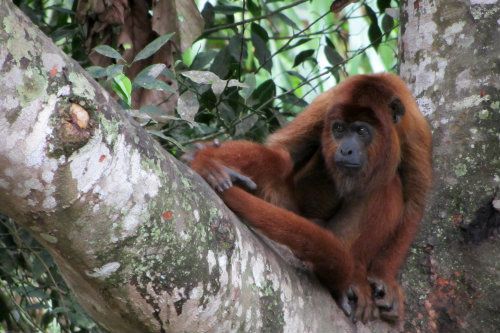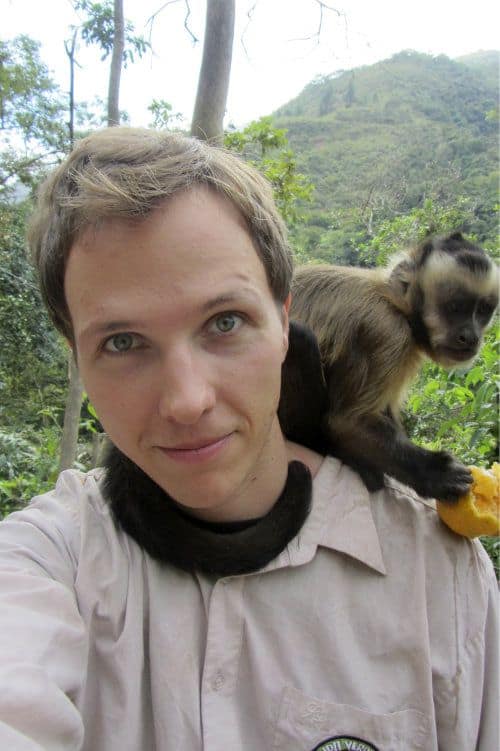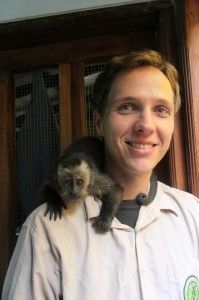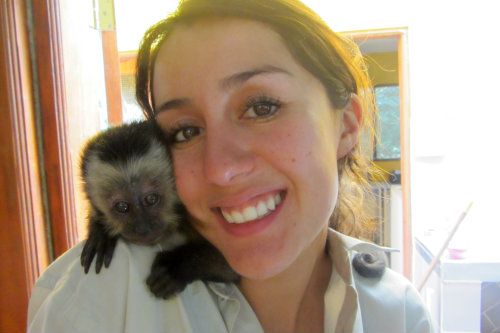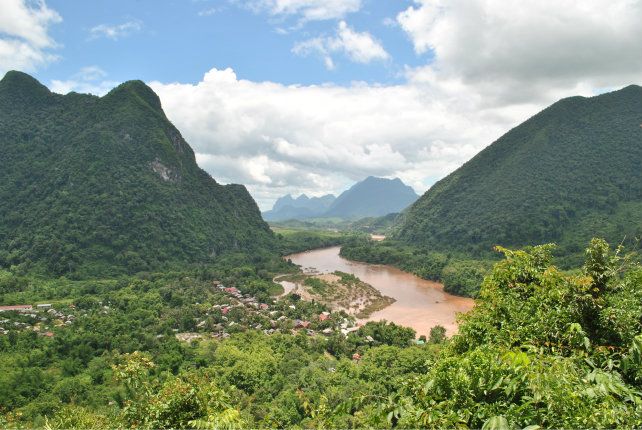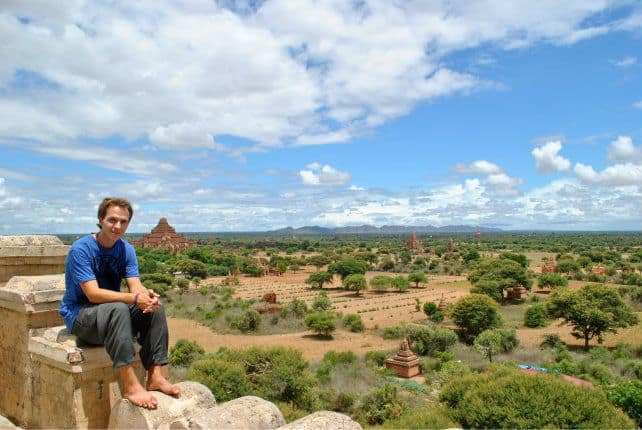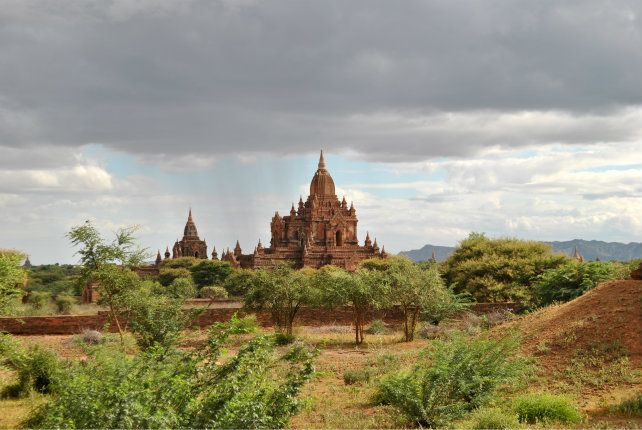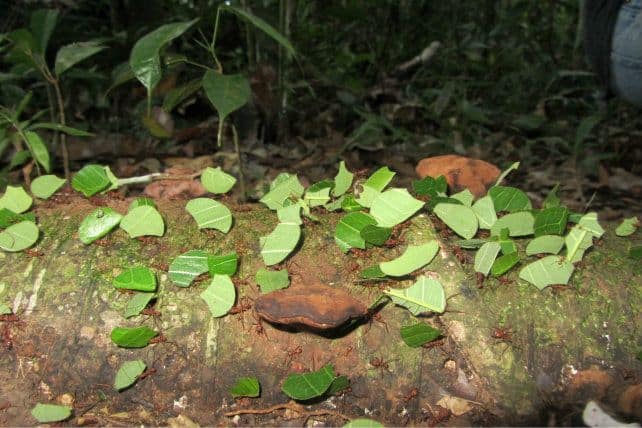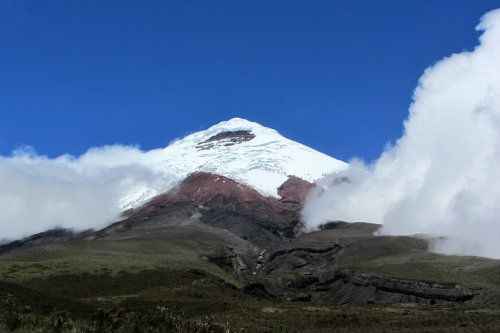WARNING: This article might inspire you to head to Bolivia and volunteer at La Senda Verde animal refuge! This interview, which was originally done via audio, is a whopping 5500 words. It will take you a good 10-20 minutes to read but I promise you – It’s worthy of your time.
Back in June of 2014, My wife and I volunteered at a place called La Senda Verde. It had been a dream of ours to volunteer with animals and despite many things in our way (limitless adventures, road blocks, protests, etc) we never gave up on that dream and sure enough, in the last two weeks of our South American journey, we ended up at a beautiful animal refuge deep in the jungles of Bolivia.
The original plan was to volunteer at an animal refuge in a different part of Bolivia but after hearing some questionable stories about that place and all the wonderful things about this place, we decided to go with La Senda Verde. Our time spent at LSV was one of the most magical experiences in both of our lives. Sure, Karla got bit a couple of times by a cranky Howler monkey but I didn’t – so there. What can I say, I guess monkeys love me.
La Senda Verde is filled with animals that were kidnapped from the jungle and sold as pets. There are heaps of parrots, Macau’s, turtles, monkeys, bears and other exotic animals that have all been given a second chance. During my rotation, I made friends with loud obnoxious birds (many of whom greeted me with “hola”), had a little turtle try to ram me with his shell (how cute) and fed oatmeal to Capuchin monkeys while they tried to go down my shirt.
One of the most amazing experiences was meeting Marcelo and Vicky, the founders of La Senda Verde. Marcelo is known as the Monkey-Man and has become the “alpha male” to more than one hundred Capuchin, Howler and Spider Monkeys. Since accidentally starting an animal refuge ten years ago, Marcelo has raised most of these monkeys himself and has become the king of the jungle for many of these amazing creatures roaming free around his property.
It’s hard to find Marcelo without monkeys following him around but on our second last day, we managed to do just that, which allowed us to record a 1.5 hour interview with this incredible man. The audio recording wasn’t very good but I spent hours transcribing it into the interview you see below. I hope you enjoy it and find inspiration in how this man gave up his normal life to help give life to these wonderful creatures.
For information on how to volunteer, see what they are up to or to send much needed donations, go to the end of this interview.
Welcome Marcelo (Aka: Monkey-Man) | A True Superhero
How did La Senda Verde start and how did you become the monkey man?
La Senda Verde is a 10-year-old eco project. When we came to this place, we didn’t even plan on having a sanctuary or an orphanage. It was meant to be a tourist destination mainly for the adventure tourists that bike down the old road, also known as the world’s most dangerous road, which equals roughly 30,000 tourists each year. Our main idea was to provide services such as showers, shelter and some food. That was it.
I was still working on another project but my wife, Vicki, quit her job in La Paz and was going to run this business-oriented eco project. After starting the business, which was about two years after coming up with the original idea, without any planning or thinking, something very beautiful happened – I rescued a Capuchin monkey, which just so happens to be Ciruelo, the alpha-male Capuchin monkey at La Senda Verde today. It’s been roughly nine years now since that happened.
Then, two or three months after the rescue of Ciruelo, Vicki and I rescued another monkey. Both of these cases involved monkeys that were being kidnapped from the jungle and taken out to the main city of La Paz to be sold as pets. In the case of Ciruelo, It was actually some children from a village nearby who came and told me about a baby monkey that had arrived in town. At this time, there was no new road so all the trucks and cars had to use the old road, which went all the way to La Paz. However, all the trucks and big buses used to stop at the village. So anyway, one Saturday, some children came and said, “Marcelo, there’s a baby monkey in town!” Out of curiosity, I went with them just to see the monkey and what was going on.
The children pointed out the truck driver who had the monkey. He was eating at a local restaurant and I went up and asked if I could sit with him. He was by himself and was probably wondering what I wanted. I proceeded to tell him that someone had told me that he was taking a monkey to La Paz . He said, “Yes, do you want to buy it?” and I said, “No, I just want to see it because I live nearby and I am curious.” After about 10 minutes, I finally convinced him to show me the monkey. Of course, he was hoping I would buy it anyway. When we got to the truck, he pulled out a small shoebox and inside was a baby Capuchin. When I saw the look on his face and in his eyes, I knew that monkey had to be with me.
It was just so sad and depressing. The boxes were very dirty and it was obvious how frightened he was, so I told the driver, “Please! You must give me this monkey.” and obviously he told me, “If you buy it and if you pay for it, it’s yours.” But I didn’t have any money on me because I had literally just ran to this place to see the monkey and I also knew that it was against the law to buy illegal animals because it motivates people to do the same thing.
And so he told me “No, I will take it to La Paz and I will sell the monkey for 200 Bolivianos ($30 USD).” But I didn’t let him go that easy. Instead, I sat with him for almost one hour and continued on with my ply for the monkey. Eventually, I think he was getting upset having me stare at him while he was eating and begging him endlessly for this little creature. But finally, it worked and he said, “Okay crazy guy – pay for my coca cola and my food (which was only six Bolivianos), take the monkey and leave me alone.” That little monkey became Ciruelo and was the first animal we rescued.
That moment helped me realize that I could probably convince other people and rescue more animals. As I mentioned before, just two or three months later, another opportunity came. In the town of Coroico (not far from La Senda Verde), we rescued a female monkey. Then, not too long after, a friend of mine called me from La Paz and told me that he had two parrots and one macaw – that they were in bad shape – and was wondering if I could take care of them because he was going travelling for a couple of months. Those birds are still here nine years later! Haha. He actually did come back but one of them had learned how to fly and so he just let it be.
And then, it’s amazing how things happen. I remember this priest from Coroico , he came early one day in the morning and he said, “Marcelo, sorry to bother you this early, but I have a big tortoise and we do not know what to do with it.” So yeah, in just one year we had five or six wild animals and here I was taking care of them. I had no idea that I would end up having an animal sanctuary – It just happened.
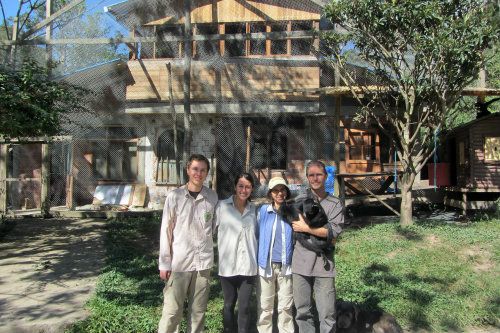
Another nice memory I have is when after rescuing the two monkeys in the beginning, a friend of mine who was working on environmental issues at the time told me, “Marcelo, you have a unique skill to rescue animals and you have the space for them. In a couple of years, your place is going to be full of animals.” And yeah, that’s what happened.
Although I had been to the jungle before, I decided to go back as a tourist and see what was going on in terms of wilderness and illegal trafficking. Even though Vicki and I were both born in Bolivia, we didn’t realize how bad the situation was. After doing some research in the jungle, I went back to La Paz and had some interviews with government officials so we could all start understanding this problem. I’ve always loved animals but I am not an expert in this matter. We then got in touch with some biologists and after talking it over with Vicki, we decided to redesign our lives and redesign the whole mission and vision of La Senda Verde. We decided to make this place a sanctuary, which obviously was a very difficult decision to make because we were planning to have this as an income operation and I was still working on another project/job. Suddenly I had to quit my job because we started to receive more animals.
Those were the starting days of La Senda Verde when there was nothing here – and yeah – so with the road going to La Paz, we started seeing many trucks going by taking lots of animals and plants and everything from the jungle, which is a 20-hour drive from here. Places like Rurrenbaque, Bando and all the northern region of Bolivia. This is the main road that connects all the northern region of Bolivia and all the way to Chile so there is a lot of products that are taken out of the region. We began to notice this more often and that’s when we realized we had to do something and why we decided to start La Senda Verde. At that time, we were working with four biking companies and the business was really booming and we figured we could work with 5 or 6 of the big biking companies, which would have made us retired by now…but we realized we had another mission in life.
How do you feel now about everything you’ve accomplished?
Very good. No complaints at all. It was a big turn in life and it made a big difference. I ended up going to La Paz to speak with these four biking companies – whom were all friends of mine – and we decided to stay with just one called Gravity. We simply told the other three that we were changing direction and making something else out of the property and that there was no business really going on anymore. They told us we were crazy and probably we are crazy but we decided to stay with just one company in order to have some income. Those were the very first years and looking back at those years, it’s not really a long time. So many things have happened, not only to our lives, but to animals, the people that we’ve known, everything we’ve learned about wilderness, conservation, environment, you know – everything – we’ve seen so many things.
Were you working in an office before?
Yes, I was working as a main coordinator for an ONG – an American company helping communities with coffee and other things. I travelled a lot but mainly worked in an office in nearby Coroico but after two years of starting to rescue animals with La Senda Verde, I had to quit my job.
That’s when the difficult decisions came in during those early years but it was very rewarding.
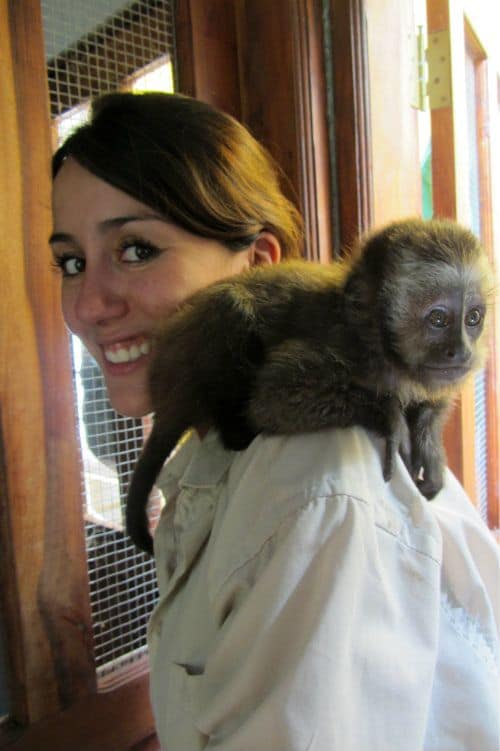
How did you learn to raise a monkey?
I had no clue at first but we relied on some friends, vets, biologists and we read a lot of books. Vicky especially, read so much whenever we got a new animal or had any diet problems.
I didn’t know too much of what I was doing, it was just the feeling – but then I got more confident in how I could communicate with them. I got experience in a different way than a professional would. And I must say that there is no such thing as an expert in wildlife because you keep learning everyday. A monkey’s behavior can change with the moon and they also evolve and develop and you need to understand them in every way.
Did you have any bad or scary experiences in the process of getting to know the monkeys?
Not really. I have always loved animals and I have always understood the animals’ behavior. I’ve found it very easy maybe because I have a good energy. I respect them. I’ve been bitten before but I’ve never been scared. If you’re scared, they feel that. The key is to respect the animals and the fact that they are wild. I think it was important that we started with just one animal and learned and developed along the way.
Now we have 56 Capuchin monkeys and they have learned how to work as a team with hierarchy and leadership and they have developed other natural skills as well. Seeing all those changes have helped us to learn and cooperate in the same way. That’s what happens with all the animals at La Senda Verde. We started with one Macau (a big parrot) and now there are 50. We started with one Spider monkey and now there are 16. We even have two bears that are incredible, though you cannot interact the same way.
What are some of the steps involved in raising a monkey?
It is a long process and you need to be very patient, especially with the baby monkeys because each one has a different story. They come from different places and most of them have the trauma of losing their mother. You need to make that connection as soon as possible so they trust you. It is a 24/7 process because baby monkeys see you as a parent and forget about their real parents.
Once they rely on you, they become more self-confident, they eat better, their health gets better and eventually they will become fully independent. For example, Spider monkeys don’t get independent for two years. That is why in the wild female spider monkeys don’t get pregnant again during those two years. In the case of Capuchin monkeys, they have another baby after 8 – 12 months because they don’t take as long to become independent. Female Capuchins will also adopt a baby after the baby has spent time in our quarantine area and they live in groups, which gives the baby a “family” to be with. Spider monkeys will also adopt other babies even though they are more dependent on us. They know when it’s a baby and they will play with the baby and make it part of the group.
What happens with the howler monkeys? Do they adopt?
They are different. In the wild they live in small groups of 8 – 12 with one alpha male and maybe two younger males. The rest are females. They don’t really adopt but they will accept the baby and help him.
Every species is different in they way they communicate and interact. The female Howler monkeys really follow the alpha male. The Spider monkeys on the other hand will split up throughout the day but will gather again at lunchtime.
All the monkeys know when there is a baby but the Howler babies have a very delicate diet, which must be very balanced. Among all monkey species, Howler monkeys have the highest mortality rate. It is very difficult to raise them and many times they die.
So they don’t get as humanized as the other monkeys?
They can get humanized but the way they become wild is relying on the others monkeys to teach them about their diet, which is so different from the other monkeys. They eat a lot of greens – different leaves from different trees. They have a bad temper compared to other monkeys, which is why they bite more often than the other monkeys. In many zoos around the world, you won’t find Howlers in captivity because they don’t deal well with living in cages unless they were born in captivity. Otherwise they will destroy themselves. Justina (one of the long-time staff members at LSV) and myself raise most of the Howler monkeys, although lately we have needed some help with the Howlers because we received four of them and simply can’t do it ourselves.
How did you teach Canelo to howl? (Note: Canelo is the alpha male Howler at LSV)
(Marcelo Howls, laughingly). Howlers start to howl after about one year and a half or maybe sooner. They copy the sound from other monkeys – mainly the alpha male. After 2.5 years, Canelo still wasn’t howling at all – not even a sound – so I started to listen to howling sounds on the computer so that I could start teaching him in a naturally way. I probably have a horrible accent and Canelo probably does as well.
Since all the monkeys are always following me around, I had to take Canelo to the top of the mountain to teach him how to howl. The first time I did the howl sound myself, Canelo just looked at me like I was a fool. But I kept doing it day after day until one day Canelo started to howl. Howling comes from the neck rather than the chest so the fist time Canelo tried he coughed a lot. Then, after a lot of practice, those muscles strengthened and he stopped coughing, though he still needed to warm up quite a bit. Canelo now has a really strong howl and you can hear it from 5 km away.
Does only the male howl?
The females howl as well but it mostly comes from the male because they have a bigger throat bone for howling.
Is Canelo the only male Howler monkey at LSV?
No, there are three in total. Tumbo is another male and he was raised by volunteers. He then came to me and I introduced him to the other Howler monkeys and he was accepted by the troop. Baby Balu is the other male but is still in the baby monkey mother program being raised by volunteers.
Are you going to have to develop other monkey groups in the future?
As long as they work well together they will stay in one single group, but if the group gets bigger and reaches like 20 – 25 Howler monkeys, then they will probably split into two groups on their own.
This is one of the issues with La Senda Verde because we continue to receive more animals all the time. We are trying to work with other animal refuges in order to transfer or trade some animals to meet the needs of the animals wellbeing. We are thinking ahead so we that don’t have a crisis.
There was actually a moment when Canelo was crawling on my lap and beginning to howl but I noticed everyone around me get nervous and back away, which made me nervous as well. I ended up standing up and leaving him alone. Has this happened before?
When you let Canelo howl on your legs, it is a very powerful experience. You just need to stay calm. He goes on your shoulder because he likes to feel higher and because that is how he learned.
Damn. Sounds like I missed out on a great experience. How was the experience of raising your first monkey?
It was an experience for everyone. Justina and Tomas (two long-time workers at La Senda Verde) were already working with me so Ciruelo was raised by everyone. He was a very spoiled monkey but you could tell that he was different, which is why he became an alpha male. Ever since he was little he would try to control other animals like the dogs and even some humans and when we mentioned this to a biologist he told us that he would become an alpha male in the future.
Some volunteers are scared of Ciruelo because he is big and is in a large cage but he is actually a good monkey and he doesn’t bite unless another monkey challenges him. He is also a very good leader and is very smart and strategic to be able to control the group. A monkey who bites often won’t be an alpha because the rest of the monkeys will be scared of him instead of respecting him. That is why they need to develop other skills. Once they know they are the alpha male, their bodies change and they actually get bigger and have more body mass. It is a genetic thing but also a learning process. It’s incredible to witness. Ciruelo will be the alpha male for a long time because Capuchin monkeys can live in captivity for 40 – 45 years. In the wild, they only live 20 – 25 years.
I have noticed that when the volunteers feed the Capuchins, they are afraid of Ciruelo because he tried to grab your hands from the cage.
Yeah, haha, Ciruelo is very strong. Not even three men can control him. The monkeys have a strength of 6 – 7 times their size.
How many monkeys have you raised?
I have raised 16 Spider monkeys by myself. Not all of them came to me as babies. Some of them were juveniles but you still need to train them. I’ve also raised a third of the Capuchins but now there are so many monkeys that we had to start letting volunteers help raise them as well.
When did the volunteering program start?
Well that wasn’t planned either but it started four years after we started the sanctuary. We had the biking tours visiting and two of the biking tourists – a women from England and a man from Ireland – came and asked if they could help us for a couple of weeks because they were studying something related to animals. They explained about the possibility of volunteering programs because we didn’t know anything about it. They ended up convincing some of the first tourists to work with us. The 5th and 6th volunteers were from Canada and one of them comes back every year.
I also raised the bears. When Aruma(the male bear) came here, he was just four months old. Vicky did most of the research about raising and taking care of the bears and eventually, volunteers took care of them with the help of what we learned.
How did you get all the monkeys to live together in peace?
It has definitely been a process because we have very limited space in comparison to the wild. In the wild they wouldn’t behave like this but here at La Senda Verde, they respect each other. They respect each other’s area and group. We still have some room to expand but we don’t want to do that yet. It seems as though all the animals understand that each animal that arrives here has had a trauma and they welcome the animal into our big family.
Of course we still occasionally have problems among them but they can still live together. There needs to be a lot of love, understanding, care and respect. Not all the animals get along with each other but they respect and know each other.
For example, if Ciruelo comes out of the cage, the Spider monkeys won’t get close to where he is. And if Ciruelo comes too close to the Spider monkeys, Maruca (the eldest female Spider monkey) will step forward and defend the group even though she knows she won’t have chance against Ciruelo.
Maruca is the oldest. She used to be the alpha female of the group but she is sick now. She is a weak monkey. She has physical problems and she knows she has some limitations. That’s why she stays far from the group.
Canelo (The alpha Howler monkey) doesn’t like Maruca because she is the grandma of the group and for some reason he doesn’t like that. All the Spider monkeys however have strong respect for Maruca.
We have a good team even though it is very difficult to find good people to work with here in Bolivia. Tomas and Justina are very good and so are the staff that don’t work directly with the animals such as Pablo, who works in the kitchen. Everyone here needs to know all the projects we are working on each and every day.
We also like to get the people who make donations involved so that they know where there money is going.
It is nice to see how the wild animals learn to cooperate amongst each other. Sometimes when I go up the hill, all the Spider monkeys follow and we can see Aruma (the bear) and he can see us but he doesn’t get disturbed at all by the monkeys.
I find it amazing how monkeys are so similar to humans in many ways.
Yes, when we are babies we can’t tell others what is wrong with us until we are able to speak. The same happens with monkeys because in the wild, they won’t let any other monkeys know they are sick. This is because they can be left behind and the predators will easily get them. They just hide their sickness. That’s why for us observation is an important job for workers and volunteers. Justina and Tomas are very good at it. Sometime they exaggerate but most of the times they are right.
What did Vicky think of everything in the beginning and what does she think of it now?
We both like animals, which helps a lot. It’s been an amazing experience. Everyone who works here has evolved. It seems so long but it has only been 10 years and there is so much work still to be done. We are still improving and trying to achieve objectives for the next 10 years.
There are a lot of projects going on. We sometimes work overnight. We really need to develop plans for the future because we both started this when we were already 56 years old. We need to plan for the next 15-20 years and so forth.
Do you have Children?
Vicky has two children from her 1st marriage. One is a musician and the other one helps us a lot.
Do you think they will ever take over La Senda Verde?
I am not sure because for this you really need to have a passion for animals.
We need a team who can pass our learning onto the people. This is why we are working with the people in Bolivia and the people involved with this place.
There are some students from universities here in Bolivia who are really enthusiastic to come and help us out.
The student tours sound really important. It’s a great way to educate them on illegal animal trafficking and how bad it is to have wild animals as a pet.
Yes, it will help stop animal trafficking. Our next strategy is education. We realized that we have a responsibility not only to the animals but to communicating these problems with people and creating awareness as to why they shouldn’t buy these kinds of animals. That’s why we are working with schools and communities nearby.
We need to keep a balance though and be realistic because we don’t have many economical resources. We need to do projects that work. We need to work in projects that help stop animal trafficking by teaching people why they shouldn’t buy these animals. A biologist told me that once an animal is taken away from its natural habitat, it loses its ecological value forever.
This problem is not only in Bolivia. It is all over the world and because Bolivia is so poor, conservation and ecological projects are not a priority.
So the government doesn’t help you in any way? They just keep sending you animals and you have no choice but accept them?
Yes. That’s right.
What will happen when you have no more space for more animals? You can’t say no so do they at least offer you more land or something like that?
No, but they need to start doing something. It is true that we must accept animals they give us but we can relocate the animals if we find a good place for them. The government rescues animals and then gives them to us. We are trying to find other things that help that we may not have here in Bolivia. We are also finding some ways that the government can help such as not paying taxes on products and materials that we need to run the place and on what we need to import.
Hopefully this works with food. In Mexico for example, they have dry food that can be stored for long time, which would really help keep costs down. The government could also help by promoting formal education to help with our operations. It doesn’t always have to be money – it can be projects too.
So what kind of project are you working on for the future?
We have a new strategy that focuses on education and communication, both nationally and internationally as well as conservation. By conservation I mean ecological changes for sustainability. For example, we are working on a hydro-electricity project to become more sustainable as well as managing our garbage and compost.
We also want the volunteers to develop more commitment to our programs so that they can be a life-changing experience for them and for us. Everything is about learning and how we can become better.
Do you ever get a vacation?
No, the monkeys need me and I love what I do. I don’t need vacations. I barely even go to the city unless I really have to go. Vicky goes to La Paz once per week to get what we can’t find in nearby villages but that is it.
That’s what vacations are anyways right? A need to escape from a job or life you don’t like.
Three or four years ago, I spent more time with volunteers because these kinds of experiences can really help develop yourself as a human being. It brings out your values. People that work in cities tend to lose that feeling of being part of nature. They want to conquer everything.
As volunteers, we’ve noticed that even when you tell visitors not to touch the animals, they don’t care because to them they are pets and they don’t understand that wild animals deserve respect.
If we understand that we are all a part of nature, we can begin to take care of it. Governments don’t do a very good job at balancing production, economy and environment. There is way more production and economy than care for the environment.
People feel they need to have two or three cars and two or three cell phones instead of just one.
This is what we have learned along the way here at LSV and we want to communicate what we’ve learned with the people who visit. Most of the volunteers have been very good and we keep in touch with them and some of them come back.
What are the top reasons that monkeys end up at La Senda Verde?
The main reasons are loss of habitat and illegal trafficking. People kill the monkeys mothers because they want the baby. Babies are so attached to their moms and will never leave them. The moms will attack to protect their babies. So the poachers kill the mother and take the baby to the cities to sell it. Only 10 – 15 % of animals taken away from their habitat will survive.
That means that for each monkey that survives, ten mothers and nine babies will die. Hunters know that but they don’t care.
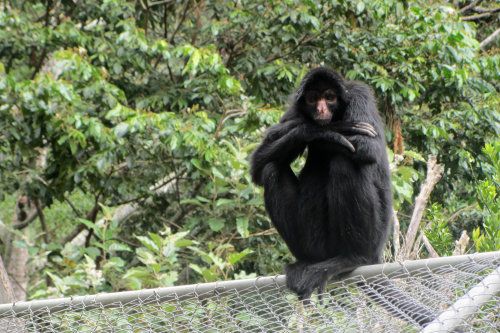
That’s really sad and awful. Especially seeing how many monkeys come here. Imagine how many don’t even make it here.
And this happens all over the world. The media should communicate about all of this bad stuff happening so people know. We get so many hurt animals – no eyes, no fingers, etc.
The Internet is our best friend. You can spread the message to the world so fast. Andean bears are in danger of extinction and we need to come up with a plan fast. We currently have one female and one male but the female will be leaving at the end of the year and we’re not sure how the male will react to this. We are not allowed to do anything with the male.
In Bolivia, we are not allowed to send animals back into the wild so it is not a fact of just making new babies – There needs to be a bigger plan.
***
I Really hope you enjoyed this interview with Marcelo the Monkey-Man. I know the english can be a bit rough in parts but I did my best to transcribe a 1.5 hour audio interview.
La Senda Verde is the real deal. It is such an inspiring and loving place. They are currently trying to raise money to build a bird aviary so that more birds can live outside their small cages. Last I checked, they had $10,000 raised out of $25,000 needed. If you want to donate anything at all or volunteer, visit their website at www.sendaverde.com
If you liked this article, you’ll definitely like to read about our time in the wild Bolivian jungle:
